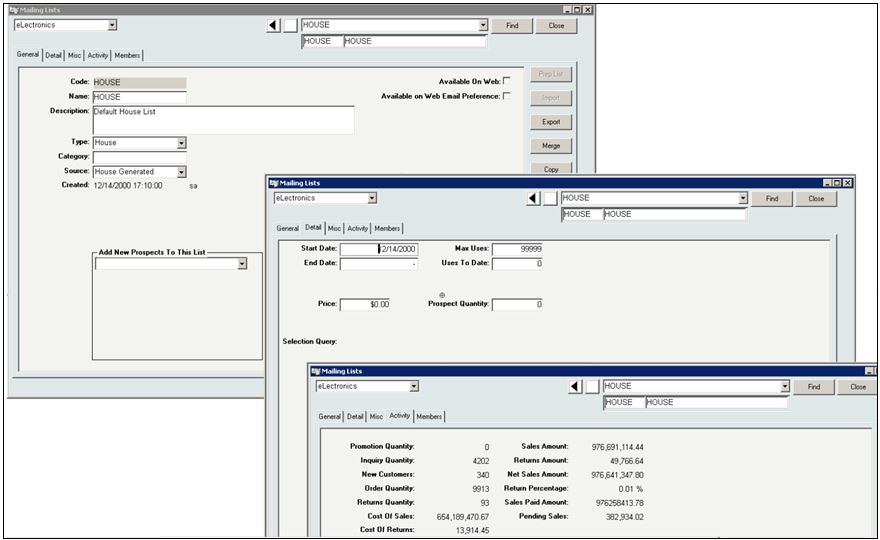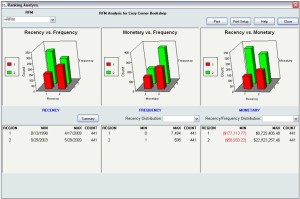Category: ERP Business Software
Life After ERP Implementation
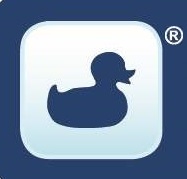 Are you using your ERP System to its fullest advantage? Your company purchased the software, training and setup work was completed, and then it was turned on. A few years have gone by, and several updates have been made to the software. Some of the employees and even a few managers have come and gone. Few people in your department remember anything from the training, but you know the basics to get your day to day work done.
Are you using your ERP System to its fullest advantage? Your company purchased the software, training and setup work was completed, and then it was turned on. A few years have gone by, and several updates have been made to the software. Some of the employees and even a few managers have come and gone. Few people in your department remember anything from the training, but you know the basics to get your day to day work done.
Once your new system is live – and you’ve used it for a while – you may have a whole new set of needs and workflows. Equally as important as having the best technology is knowing what it can do for your business, and using it to continuously improve. Your business is constantly evolving and improving. It’s beneficial for long-time software users to evaluate how they’re using their software to determine whether improvements can be made in their processes. Here are some things to consider as you evaluate your system.
- Is your staff doing manual tasks that can be automated?
- Are you getting the most out of your web cart?
- How fast can customers find your products?
- Have your employees reverted to old processes?
This leads to frustration – and the feeling you’re stuck with something that isn’t working for you. So often, we hear “Why didn’t anyone tell us the system could do this?”
Align efficiencies with your organization’s goals
Getting the most from your ERP system means exploring, testing, and implementing new procedures and functions that maximize throughput, maximize the use of your resources, and maximize growth.
To accomplish this, you must fully understand how the system works today in your organization, as well as other ways it can potentially be configured to be used more effectively. This becomes especially important when new versions of the system become available because they include new capabilities or improvements to existing functionality.
It can be overwhelming to figure out a change strategy. Completing Annual Implementation Audits of your system and procedures can refresh the relationship between your system and your procedures. It can identify what you need, what you want, resolve annoyances, and answer questions about new features that can solve problems. Implementation Audits commonly reveal shortcuts that were not being used, and often find processes being done manually when your software could be doing them for you. You can identify functions, features, or optional modules that are not being used at all because nobody knew they existed. At this time, users and managers can attend refresher training sessions, keeping the knowledge and support of your ERP system in the hands of qualified users.
When was your last Annual Implementation Audit? When it’s time to re-align your ERP system with your processes, give us a call. Morse Data is committed to Change Management and Continuous Process Improvement. Changes can get out of line, but we can help get your ducks InOrder.
Helpful Articles for Your Business
- You can’t hide from Cyber Threats, but this article can help you organize a strategy to defend your business against it.
- B2B companies – Don’t miss out on opportunities to grow your business! Use your eCommerce store to attract new customers in surprising ways.
- This interesting article discusses billion dollar digital marketplaces.
- It’s no secret that content increases search results and traffic to your website, but how does that happen? This article offers helpful tips.
InOrder ERP Kits and Substitutions Can Benefit Your Business
If your company buys lots of parts, and then puts them together before shipping them to customers, InOrder’s Kit Definitions feature will benefit your business. If your company doesn’t always keep enough quantity on hand for your common components, or does not know how many parts to keep in stock, then the InOrder Substitutions feature is for you.
Kit Definitions
The InOrder Kit Definitions feature allows you to assemble multiple items for sale as a single item. With this functionality, you can track the inventory, component assembly and disassembly, sales, and costs of the assembled kit and its component items.
Using InOrder for Kits is great for items you always sell together. It allows you to stock and sell multiple part numbers together under one Top Number. A good example of this would be a Lowering Block Kit, which has u-bolts, blocks, and hardware. 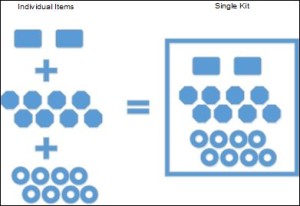
The InOrder Kit Definitions feature provides the ability to:
- Control the inventory and cost for each item individually.
- Base the total cost for the kit on all the items included.
- Discount the retail price (buy in a kit and save).
- Replenish kits based on individual SKUs in stock.
- Disassemble kits when you no longer need them, or to free up common components needed elsewhere.
- Provide easy Kit Definition access to your Customer Service Reps and online, enabling assistance with replacement parts orders.
InOrder Reports for Kit Definitions include the Kit Management Report, which lists kits, their components, and the information about them. Because assembled kits and components are inventory items, they appear on inventory reports and sales reports as any other inventory item. In addition, the InOrder Replenish Report instructs you on how many kits to build based on total number of kits sold and how many of each individual item is in stock. (For example, you can run the report on how many kits were sold in the last 30 days.) Kits are either in stock or out of stock. If one item in the kit is out of stock, the entire kit will be out of stock.
Substitutions
When an out-of-stock inventory item is ordered, you can substitute either a single in-stock inventory item for another brand of the same item, or you can substitute a group of inventory items (Kit-on-the-Fly). This feature works best when you have many items that are typically ordered together, but you need the ability to ship what is in stock. (All items do not have to be in stock at one time to ship, as with Kit Definitions.)
A good example of a Substitution would be an order for the following:
- Interior kit
- Seat Upholstery
- Door Panels
- Headliner
- Carpet Kit
- Rear Seat Shelf
In a Substitution, if the Carpet Kit is out of stock, you can still process the order and ship the remaining in-stock items. The carpet will ship as a backorder (when it is back in stock) and retain the substitution price. InOrder will exchange the price for each item, so it will equal the Substitution Price (buy all the items together and save). In addition, it will break all the items out on an invoice, and you can remove items that may not be needed; the price will adjust.
Unlike Kit Definition, Substitutions do not show in stock or out of stock. Once invoiced, the items are displayed on the invoice with the exchanged price and will either be in stock or backordered (the Top Number will not have inventory).
You can use this feature for Build-to-Order Kits-on-the-Fly as your customers request them, or for Buy-X-Get-Y free offers.
This great feature is very flexible, allowing you to offer up a discounted price for bundled items, and still ship items regardless of inventory status of the items included.
Contact us for more information about how the InOrder Kits and Substitutions features can benefit your business.
Tools for your eCommerce Shoppers
 There are many ways you can help shoppers navigate your eCommerce store. But not all of these features provide the same benefits for all shoppers – or for you. Let’s explore 4 tools that are easy to provide and your customers will appreciate.
There are many ways you can help shoppers navigate your eCommerce store. But not all of these features provide the same benefits for all shoppers – or for you. Let’s explore 4 tools that are easy to provide and your customers will appreciate.
Search Filters
If shoppers search for something specific, it means they know what they want, and they want to find it immediately. Check your search analytic results to see how shoppers are searching for your products. Remember that a search engine-optimized design gives you additional edge over the competition.
If you have multiple product categories, make sure your customers can easily find what they’re looking for. Provide them with the ability to combine different search criteria, in whatever combinations they choose.
Reviews
Reviews can increase sales by steering and bolstering confidence as shoppers are considering their purchases. Google recognizes the benefits of ratings and reviews, and you can encourage Google to show them with schema markup. Additionally, it is important to know what your customers think of your products because then you know how you can improve your offerings, and where you should consider raising or lowering prices. If your ERP system provides the capability, you can enable live crowd sourcing so your customers can provide feedback for products. You can even provide online forums or Q&A sections. After each purchase, ask for a review of both the shopping experience and the product. This lets the customer know that you still care even after the sale. And when your customers take the time to send their valuable opinions, make sure to review and display them as soon as possible.
Chat-bots
A chat-bot is a messaging system between you and your shoppers. An artificial customer service agent represents your side of the conversation, providing assistance that is always available.
Chat-bots can help your business by sending automatic texts and Emails to customers, informing them of specials, sending coupons and reminders to finish the checkout process to reduce cart abandonment.
Chat-bots can be helpful when they’re needed, as long as they’re not intrusive and don’t get in the way of browsing a website.
Videos
Videos are can be very useful shopping tools. Customers can use videos to learn the purpose of a product, how to use it, and why they would want it. Videos can provide information that might be missing from an item’s description, answer questions that might not otherwise be asked, and they often help shoppers decide to buy an item.
Videos also help shoppers decide not to buy an item, which is a benefit to you if customers don’t buy something they won’t be happy with or will be disappointed in, or will return.
From simple search filters to virtual reality, many shoppers want your assistance, and if you don’t provide what they expect, they’ll find another eCommerce site that will.
Can Free WiFi Benefit Your Business?
 Free WiFi is common in many retail stores, and, in many cases, it provides benefits to both the business and its customers. Everybody likes “free” and WiFi is no different. For example, customers may linger longer, buy more, and return to a store with free WiFi. Could this make as big a difference as targeted marketing? If you’re exploring this service, here are some ways it could benefit both you and your customers.
Free WiFi is common in many retail stores, and, in many cases, it provides benefits to both the business and its customers. Everybody likes “free” and WiFi is no different. For example, customers may linger longer, buy more, and return to a store with free WiFi. Could this make as big a difference as targeted marketing? If you’re exploring this service, here are some ways it could benefit both you and your customers.
Competitive – As mentioned, free WiFi is common, and in some cases, customers expect it. So don’t lose shoppers to the store down the street because they have free WiFi and you don’t.
Opportunities – You know it’s critical to interact with customers, and free WiFi can earn its keep when it comes to this. Customers begin at your site, where you have a chance to relay your message and thank them with a promotion that’s valid during that visit.
Engagement – With free WiFi, customers may stay longer, browse more, enjoy their stay and possibly buy more. When shopping is pleasant, you expect customers to come again. Shoppers may post their locations on social media, where they might even encourage their friends and families to shop – Bonus!
Customer Service / Loyalty – Use your free WiFi to embrace your comparison shoppers. Motivate them to research your products on your website, making it easy to buy from you. Keep shoppers involved and build confidence and trust by providing a community environment and participating with them.
Analytics – You know how important it is to make relevant offers. Studies also show that customers get annoyed with too many irrelevant messages, so use your WiFi service to observe customer preferences and provide them with offers they’ll appreciate.
There are both pros and cons to offering free WiFi. Speed is one concern, and security is another. You want control over how it is used so it isn’t abused. And while it’s nice to have customers sit in your coffee shop or restaurant and surf (or work) all day using your free WiFi, that practice could seriously inhibit table turnaround. While free WiFi has its benefits, it might not be the smart choice for every business.
What are your thoughts on offering free WiFi?
Use These Tips to Welcome all Shoppers to Your eCommerce Website
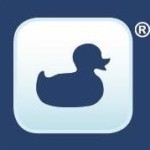 If your business has a physical presence, you already know to provide equal access to your facilities to include people with disabilities. But what about your eCommerce website? If it serves the public, now is a good time to evaluate it to make sure people with disabilities can access it as easily as those without disabilities. Designing your website with equal access to all shoppers is smart customer service and good for your business. It’s not difficult, and you don’t want to miss out on a large group of customers because they can’t access your website!
If your business has a physical presence, you already know to provide equal access to your facilities to include people with disabilities. But what about your eCommerce website? If it serves the public, now is a good time to evaluate it to make sure people with disabilities can access it as easily as those without disabilities. Designing your website with equal access to all shoppers is smart customer service and good for your business. It’s not difficult, and you don’t want to miss out on a large group of customers because they can’t access your website!
Here are four recommendations from the ADA website to address accessibility problems.
- Videos with sound are great for people who can hear your content but not see it. But what about people who can’t hear the sound in your videos? When you use multimedia, such as videos, include descriptions and captions. This allows people to see your message even if they can’t hear it.
- Consistency builds trust, and helps your brand be easily recognized. However, flexibility with colors and font settings is key to providing access to people who have difficulty seeing the fonts and color combinations you choose. To accommodate them, allow people to use their browsers and systems to specify the colors and font settings they need to see your content.
- PDF documents keep your intended format consistent and they are difficult to change. For these reasons, they are widely used for digital distribution. However, they don’t work well with screen readers, alternate colors, and alternate font settings. So, the content in PDF documents might not be accessible to everyone. If you use them on your website, also provide another format, such as HTML or a text-based format.
- As with PDF documents, images are not accessible by screen readers or Braille display devices. To make your images available to people with a vision disability, include descriptive text for each image so your shoppers know what you’re showing them.
The ADA website also provides examples, terms, and information to help understand why these steps are so necessary. While these are best practices intended for state and local governments, you can easily apply these to your website to be sure you reach the largest possible audience, and more people can benefit from your message.
To help you reach even more users, the Word Wide Web Consortium (W3C) has developed Web Content Accessibility Guidelines (WCAG) to assist developers with guidance and techniques. It provides 12 organized guidelines with test criteria, as well as related stories to help understand the reasons for each of them.
Contact us if you need help making your InOrder eCommerce website accessible to more customers, or for more information about using InOrder for your eCommerce business.
5 Reasons for Retail Failure
Many reasons can cause problems with a retail business – poor pricing, location, not enough stock, poor planning, all of which can lead to unsatisfactory customer experience and ultimately, failure.
It’s important to understand why a project failed to learn for future success. How can things be different? How can you succeed next time? If you explore reasons for failure, you can use that information to help avoid it in the future.
Poor Location
Location might not seem important, but it is – especially if you’re thinking about international expansion. What do customers in that country expect of their local businesses? What do employees expect? What are the various business and employment laws? If your business is local, it’s crucial to know who your customers are and where they are. Keep these things in mind when deciding where your store will live.
Inappropriate Pricing
 Even in your home country, pricing is important for similar reasons – what do customers expect? How far will your customers travel for your products? Can the area support your pricing structure? If your competitors are charging much less, which store will shoppers pick?
Even in your home country, pricing is important for similar reasons – what do customers expect? How far will your customers travel for your products? Can the area support your pricing structure? If your competitors are charging much less, which store will shoppers pick?
Make sure your prices reflect your shoppers’ budgets, and that you can keep up with pricing of your competitors.
Not Enough Stock
Exceptional warehouse control, real-time inventory management, and communication between the distribution center and your ERP system are crucial to maintaining customer satisfaction. Think about it – who wants to shop for groceries in a store that doesn’t keep enough fresh produce in stock? or milk? or bread? Similarly, when shoppers look for clothes, they want to go to stores that carry their styles and sizes.
The other side of this problem is too much inventory because you don’t know how much you need. If you order a million dollars in inventory and don’t sell it in a timely manner, your money is losing interest because it is tied up while inventory sits in the warehouse.
Use an exceptional integrated ERP system to increase productivity. Here are ways your ERP system can help with this.
Inexperienced Partners
There are many things to consider, such as fraud, theft and security, and even training. When working with other parties or their software, unexpected obstacles and delays may be introduced, such as schedule conflicts, terminology misunderstandings, errors, unexpected expenses, and customer service issues. Being on the alert for this and working with experienced businesses and trading partners will go a long way in helping your projects stay within budget and on time.
No Planning
Determine your detailed plan of action items and include the names of the individuals who will be responsible for those tasks. Hold them responsible for the work assigned to them and require a weekly status report on completed tasks and road blocks encountered. This is especially important when implementing critical software for your enterprise.
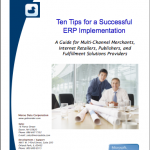 In more than three decades, the biggest mistake we see companies make is to not create an action plan that covers all aspects of implementation. For more valuable information about Implementing your ERP system, download our “Ten Tips for a Successful ERP Implementation” paper. Whether you’re considering a new ERP system or you’re just beginning an implementation, this paper will help you keep your implementation within budget and on time.
In more than three decades, the biggest mistake we see companies make is to not create an action plan that covers all aspects of implementation. For more valuable information about Implementing your ERP system, download our “Ten Tips for a Successful ERP Implementation” paper. Whether you’re considering a new ERP system or you’re just beginning an implementation, this paper will help you keep your implementation within budget and on time.
Cultivate and Grow the Most Profitable Segments of Your List with InOrder ERP
There are many times during the year when you send a mailing to a specific group of customers. With the InOrder ERP system, you can send promotional messages to customers, create new lists, import lists from external sources, and even export your mailing list to a spreadsheet format.
Promotional Lists
- Catagorize your lists and assign customers to them.
- Specify label formats.
- Use with the InOrder Address Validation interface to validate a batch of addresses within a specified range of U.S. postal codes.
- Automatically merge duplicate address records.
- Use with the InOrder Email Marketing Enhancement to send Email Blasts.
- Send followup notices. Define followup efforts that activate after a specified number of days.
Create Lists
- Import your own mailing lists with names and addresses.
- Import your own lists of Email address.
- Generate promotional keycodes as list segments are generated.
- Export your mailing list to spreadsheet format.
- Define your call lists.
RFM Analysis
- Simultaneously store an unlimited number of RFM scores for each customer. (Recency (most recent purchase date), Frequency (how many purchases a customer has made), Monetary (spending).
- Group customers by RFM cells.
Contact us for more information about mailing lists and marketing with InOrder.
UPS Study Provides Insights for eCommerce Businesses
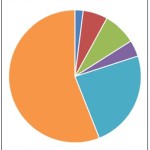 In its 2016 Pulse of the Online Shopper Study, UPS provides insights for eCommerce businesses as they plan their strategies for growth. This study explores online shoppers and how they have “Evolved.” Their shopping cycles are represented, showing a strong promise for future buying power. Included are discussions of new technologies they’re interested in, how and where they shop, and what retailers must provide to win them over or lose them.
In its 2016 Pulse of the Online Shopper Study, UPS provides insights for eCommerce businesses as they plan their strategies for growth. This study explores online shoppers and how they have “Evolved.” Their shopping cycles are represented, showing a strong promise for future buying power. Included are discussions of new technologies they’re interested in, how and where they shop, and what retailers must provide to win them over or lose them.
Devices are explored, with smartphone shopping showing the most growth. As technology (and retailers) make it easier and faster to use smartphones for shopping, satisfaction with them increases, fueling faster growth opportunities for businesses that support them.
Search habits are also shown, revealing that shoppers prefer to begin searching on marketplaces. According to the study, 90% of independent online retailers sell through them, and shoppers prefer them for product/shipping pricing, quick delivery, product selection and availability, and more choices in one place. Also mentioned are shopping trends, along with “cross-channel purchasing,” (where shoppers research vs. where they shop), and how social media influences shopping.
Shoppers revealed that they want to help themselves, but they also want help (such as Q&A, FAQs, chat, etc.) to always be available when they need it. Unfortunately, it doesn’t sound like many retailers provided those services. Hopefully, many will respond to these requests.
As can be expected with online purchases, returns are higher. While many shoppers prefer to drop their returns off at carrier locations, many also prefer to take their returns to a physical store. This provides opportunities for retailers to make these experiences easy for shoppers, who might make additional purchases while making their returns.
UPS has also conducted its sixth annual study of online shoppers, which includes five volumes. This link provides a download to Volume 1, which includes information to request future volumes.
Shoppers want control and flexibility. They want helpful responsiveness when they need it. They want fast searches, large selections, quality products that are available, and quick, low-cost delivery. They want access, coupons, and notifications without intrusion.
Use this valuable information to help you make decisions for winning these “Evolved” customers. And, in doing so, grow your business.
Contact us for a demo of how InOrder can help you implement the features so many shoppers demand.






